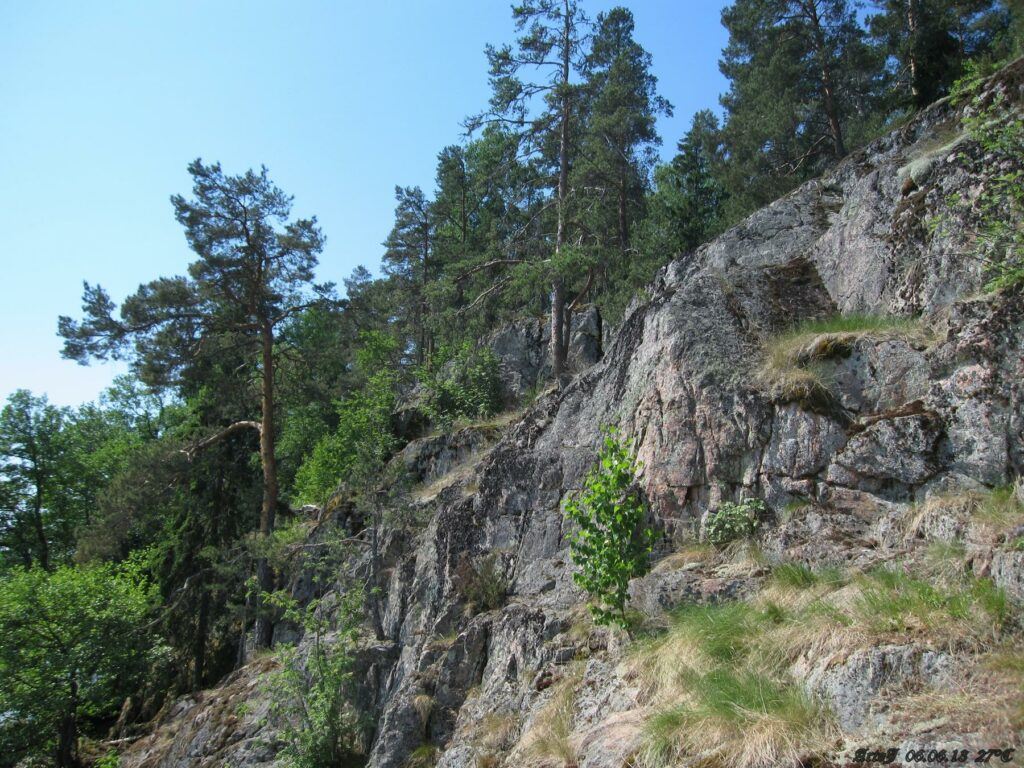The Physical and Mental Benefits of Rock Climbing
Rock climbing is not only an exhilarating adventure but also a hobby that provides numerous physical and mental benefits. Engaging in this thrilling activity offers a unique opportunity to challenge oneself physically while also reaping the rewards of mental well-being. Let’s delve into the incredible advantages that rock climbing has to offer.
1. Physical Fitness and Strength
Rock climbing is a fantastic way to enhance your physical fitness. It engages multiple muscle groups throughout your body, providing a comprehensive full-body workout. The constant maneuvering, gripping, and climbing against gravity help to build strength and increase endurance. Whether you’re scaling vertical walls or conquering challenging boulders, rock climbing is a dynamic and intense physical activity that can significantly improve your overall strength, agility, and cardiovascular health.
2. Mental Health and Well-being
In addition to its physical benefits, rock climbing also has a positive impact on mental health. The combination of focus, problem-solving, and determination required during climbs can provide a sense of accomplishment and boost your self-confidence. As you face and overcome challenges on the wall, you’ll develop resilience and learn to push beyond your comfort zone. The rhythmic and repetitive nature of climbing movements can also induce a state of mindfulness, promoting mental clarity and reducing stress levels. Rock climbing offers an escape from the pressures of everyday life, allowing you to connect with nature and find solace in the present moment.
3. Balance and Flexibility
Rock climbing demands a high degree of balance and flexibility. As you navigate different routes and positions on the wall, you’ll learn to distribute your weight effectively and maintain equilibrium. This improved sense of balance transcends the climbing wall and can benefit other areas of your life, such as posture and coordination. The stretching and reaching required during climbing movements also contribute to increased flexibility, enhancing your overall range of motion and reducing the risk of injuries in daily activities.
Rock climbing is a holistic activity that not only challenges your physical limits but also nurtures your mental well-being. By engaging in this dynamic hobby, you can experience the joy of conquering new heights while reaping the rewards of enhanced physical fitness, improved mental resilience, and a greater sense of balance and flexibility. It’s time to embrace the adventure and discover the transformative power of rock climbing.

Getting Started with Indoor Climbing
If you’re new to rock climbing, starting with indoor climbing is a fantastic way to learn essential skills and techniques in a controlled environment. Indoor climbing facilities provide a safe and supportive space for beginners to develop their climbing abilities[^freshhobby]. Let’s explore the key aspects of getting started with indoor climbing.
1. Importance of Indoor Climbing for Beginners
Indoor climbing offers several advantages for novice climbers. It provides a controlled setting where you can practice climbing techniques, learn proper safety measures, and gain confidence before venturing into the great outdoors. Indoor climbing walls are designed with various routes of different difficulty levels, allowing you to progress at your own pace and gradually build your skills[^freshhobby].
2. Essential Skills and Techniques to Learn
To excel in rock climbing, it’s crucial to acquire and hone certain skills and techniques. Here are some fundamental aspects to focus on:
a. Belaying and Knot Tying
Belaying is the process of managing the climbing rope to ensure the safety of the climber. Learning proper belaying techniques, such as using an ATC belay device and tying secure knots, is essential for both your safety and the safety of your climbing partner[^freshhobby].
b. Communication Between Climbers and Belayers
Clear and effective communication is crucial during rock climbing. Establishing a system of commands and signals with your belayer ensures smooth coordination and enhances safety. Practice good communication skills to convey your intentions and receive instructions effectively[^freshhobby].
c. Proper Use of Climbing Gear
Understanding and utilizing the right climbing gear is vital for your safety and success. Essential gear includes a harness, climbing shoes, a helmet, a chalk bag, and ropes[^freshhobby]. Familiarize yourself with the purpose and correct usage of each piece of equipment to ensure a safe and enjoyable climbing experience.
3. Necessary Climbing Equipment for Beginners
When starting with indoor climbing, you’ll need to invest in some basic climbing equipment. Here’s a breakdown of the essential gear:
- Harness: A harness is a crucial piece of equipment that securely attaches you to the climbing rope, providing safety and support during climbs[^freshhobby].
- Climbing Shoes: Climbing shoes offer superior grip and precision on the climbing wall, allowing you to maintain better control and balance[^freshhobby].
- Chalk Bag and Chalk: Chalk helps keep your hands dry and enhances grip on holds. A chalk bag conveniently holds chalk for easy access during climbs[^freshhobby].
- ATC Belay Device: An ATC belay device is used for belaying and controlling the rope during climbs. It helps manage rope tension and facilitates a smooth descent[^freshhobby].
- Helmet: A helmet protects your head from potential falling debris or accidental bumps against the wall[^freshhobby].
- Ropes: Indoor climbing facilities usually provide ropes for climbers to use. However, if you plan to venture into outdoor climbing, you’ll need to invest in your own climbing ropes[^freshhobby].
By starting your rock climbing journey indoors, you can familiarize yourself with essential skills, techniques, and equipment in a controlled environment. Indoor climbing provides a supportive space to learn and progress, setting a strong foundation for your future climbing endeavors[^freshhobby]. So gear up, lace up your climbing shoes, and get ready to scale new heights!
Outdoor Rock Climbing: Embrace the Greater Challenge
While indoor climbing provides an excellent foundation, outdoor rock climbing offers a whole new level of excitement and challenge. It allows climbers to immerse themselves in stunning natural landscapes and experience the thrill of conquering real rock formations. Let’s explore the world of outdoor rock climbing and the essential considerations for a safe and enjoyable experience.
1. Safety Precautions for Outdoor Climbing
Outdoor rock climbing comes with additional risks and considerations compared to indoor climbing. Prioritize safety by following these essential precautions:
a. Climbing with Experienced Partners or Guides
When venturing outdoors, it’s crucial to climb with experienced partners or guides who are knowledgeable about the area, climbing techniques, and safety protocols. Their expertise will enhance your safety and ensure a smoother climbing experience.
b. Assessing and Managing Risks
Outdoor climbing involves factors such as changing weather conditions, loose rocks, and potential hazards. Before attempting a climb, assess the risks associated with the route and take necessary precautions. This may include wearing a helmet, using additional protective gear, or avoiding climbs during inclement weather.
c. Proper Anchoring and Equipment
Unlike indoor climbing, outdoor climbers must set their own anchors to secure the rope. Learn proper anchoring techniques and ensure you have the necessary equipment, such as carabiners and ropes, to create secure anchor points. Regularly inspect your gear to ensure it is in good condition.
2. Choosing the Right Outdoor Climbing Location
Outdoor rock climbing offers a vast array of breathtaking locations around the world. When selecting a climbing destination, consider the following factors:
a. Skill and Experience Level
Different climbing areas cater to various skill levels. Choose a location that aligns with your climbing abilities and experience. It’s essential to challenge yourself, but also ensure you’re not attempting climbs that are beyond your capabilities.
b. Access and Regulations
Research access details and any specific regulations related to the climbing area you plan to visit. Some locations may require permits or have restricted access during certain times of the year. Respect the rules and guidelines to preserve the natural environment and maintain positive relationships with local communities.
c. Consider Climbing Grades and Route Types
Climbing grades and route types vary from location to location. Familiarize yourself with the grading system to understand the difficulty level of routes. Additionally, consider whether you prefer traditional climbing, sport climbing, or bouldering, and choose a destination that aligns with your preferences.
Outdoor rock climbing provides an exhilarating experience, allowing you to challenge yourself physically and mentally while immersing yourself in nature’s beauty. By taking necessary safety precautions, climbing with experienced partners or guides, and choosing the right location for your skill level, you can embark on an unforgettable adventure in the world of outdoor rock climbing. So gear up, embrace the greater challenge, and conquer the heights of the great outdoors!
The Benefits of Rock Climbing as a Hobby
Rock climbing is not just a physically demanding activity; it also offers numerous benefits for both your physical and mental well-being. Engaging in rock climbing as a hobby can have a positive impact on various aspects of your life. Let’s explore some of the key benefits of rock climbing.
1. Physical Fitness and Full-Body Workout
Rock climbing is a fantastic way to improve your overall physical fitness. It engages multiple muscle groups, providing a full-body workout. Climbing requires strength, endurance, balance, and flexibility. As you progress in your climbing abilities, you’ll notice improvements in your muscular strength, cardiovascular fitness, and overall body composition.
2. Mental and Emotional Well-being
Rock climbing offers not only physical challenges but also mental and emotional ones. The mental focus required during climbs helps improve concentration, problem-solving skills, and decision-making abilities. Overcoming challenging routes and conquering fears can boost self-confidence and provide a sense of accomplishment.
3. Stress Relief and Mindfulness
Rock climbing can serve as an excellent form of stress relief and a way to disconnect from daily pressures. When you’re on the wall, focusing on your movements and the present moment, it promotes mindfulness and helps clear your mind of distractions. The combination of physical exertion and the serene beauty of natural surroundings can provide a peaceful and rejuvenating experience.
4. Building a Supportive Community
Rock climbing fosters a sense of community and camaraderie among climbers. Whether you’re climbing at an indoor facility or venturing outdoors, you’ll often find a supportive community of fellow climbers who are passionate about the sport. This community can provide valuable guidance, encouragement, and a shared sense of adventure.
5. Personal Growth and Life Lessons
Rock climbing has a way of teaching valuable life lessons. It pushes you out of your comfort zone, challenges you to face your fears, and helps develop resilience and perseverance. Through climbing, you’ll learn the importance of goal-setting, problem-solving, and adaptability, skills that can be applied to various aspects of life.
Rock climbing is not just a hobby; it’s a transformative experience that offers physical, mental, and emotional benefits. So whether you’re scaling the walls at an indoor facility or exploring the beauty of the great outdoors, rock climbing has something to offer for everyone. Embrace the challenges, enjoy the journey, and reap the rewards of this incredible sport!

Essential Gear for Rock Climbing
To fully enjoy the rock climbing experience, it’s crucial to have the right gear. Here are some essential items that every rock climber should have in their arsenal.
1. Climbing Shoes
Climbing shoes are a vital piece of equipment that provide grip and support on the rock surface. They have a snug fit to enhance precision and sensitivity while climbing. Look for shoes that are comfortable, yet snug enough to provide a secure fit.
2. Harness
A climbing harness is used to secure yourself to the rope and provide support during climbs. It should fit well and be adjustable to ensure a comfortable and secure fit. Proper harness usage is essential for safety while climbing.
3. Belay Device and Carabiners
Belay devices are used to control the rope during climbs, allowing for smooth and controlled belaying. Carabiners are essential for attaching the rope to your harness and for various climbing techniques. Choose high-quality, reliable belay devices and carabiners that meet safety standards.
4. Helmet
A climbing helmet protects your head from potential falling debris or impacts during a climb. Look for a helmet that fits well, provides adequate coverage, and is designed specifically for climbing.
5. Chalk Bag and Chalk
Chalk is used to absorb moisture from your hands, providing a better grip on the rock surface. A chalk bag is a small pouch that holds the chalk and can be attached to your harness for easy access during climbs.
6. Ropes
Ropes are an essential part of any climbing setup, providing safety and support. There are different types of ropes available, including dynamic ropes for lead climbing and static ropes for rappelling. Choose ropes that are of high quality and appropriate for the type of climbing you plan to do.
Remember, investing in high-quality gear that meets safety standards is essential for a safe and enjoyable rock climbing experience. Proper maintenance and regular inspection of your gear are also important to ensure its longevity and reliability. So, gear up with the right equipment, stay safe, and enjoy the thrill of rock climbing!

Learning and Improving Your Climbing Skills
Becoming proficient in rock climbing requires continuous learning and practice. Here are some tips and strategies to help you improve your climbing skills and progress as a climber.
1. Start with Indoor Climbing
Indoor climbing facilities provide a controlled environment where you can learn and practice essential climbing skills. Begin by taking introductory classes or hiring a climbing instructor who can teach you the fundamentals of climbing technique, belaying, and safety
2. Focus on Technique
Developing good climbing technique is crucial for efficient and effective climbing. Pay attention to footwork, body positioning, and balance. Practice precise and controlled movements, utilizing your legs to generate power and conserve energy. Learn to read the rock and identify the best handholds and foothold
3. Strength and Conditioning
To improve your climbing ability, it’s important to work on strength and conditioning specific to climbing. Incorporate exercises that target your upper body, core, and grip strength. Additionally, include flexibility and mobility exercises to enhance your range of motion and prevent injuries. Regularly engaging in cardiovascular exercises can also improve your endurance on the wal
4. Climb with More Experienced Climbers
Climbing with more experienced climbers can provide valuable insights and mentorship. They can offer guidance on technique, share climbing tips, and help you push your limits. Observing and learning from experienced climbers can greatly accelerate your progress as a climber
5. Set Goals and Track Your Progress
Setting specific climbing goals can help motivate you and track your progress. Whether it’s conquering a challenging route, improving your climbing grade, or participating in a climbing competition, having goals gives you something to work towards. Break down your goals into smaller, achievable milestones and celebrate your achievements along the
6. Learn from Mistakes and Embrace Challenges
Rock climbing is a sport that requires perseverance and resilience. Embrace the challenges you encounter and view them as opportunities for growth. Learn from your mistakes, analyze your climbs, and identify areas for improvement. Push yourself out of your comfort zone and embrace the fear of the unknown, as it is often where the most rewarding experiences lie
Remember, becoming a skilled climber takes time and dedication. Enjoy the process, celebrate your progress, and never stop learning. With practice and determination, you’ll continue to improve and unlock new heights in your climbing journey

Ready to Start Your Rock Climbing Adventure?
Rock climbing is a thrilling and rewarding hobby that offers physical challenges, mental growth, and a supportive community. Whether you’re a beginner or an experienced climber, there’s always something new to learn and explore in the world of rock climbing. So, what are you waiting for? Get started on your rock climbing adventure today!
1. Find a Local Climbing Gym
If you’re new to rock climbing, start by finding a local climbing gym or facility near you. These indoor climbing centers offer a safe and controlled environment for beginners to learn the basics, practice climbing techniques, and build strength and confidence. Take advantage of introductory classes or hire an experienced climbing instructor to guide you through the initial stages.
2. Join a Climbing Community
Rock climbing is not just a hobby; it’s a community. Connect with other climbers by joining local climbing clubs, attending meetups, or participating in climbing events. Engaging with fellow climbers can provide valuable insights, support, and opportunities for climbing partners. Sharing your climbing experiences and learning from others can enhance your overall climbing journey.
3. Explore the Great Outdoors
Once you’ve gained some experience and confidence in indoor climbing, consider taking your skills to the great outdoors. Outdoor rock climbing offers a whole new level of challenge and adventure. However, it’s important to remember that outdoor climbing requires additional skills and knowledge, such as anchor setting, route finding, and understanding the local climbing ethics and regulations.
4. Continue Learning and Growing
Rock climbing is a lifelong learning process. Continually seek opportunities to expand your knowledge and improve your skills. Attend advanced climbing classes, workshops, or even consider pursuing certifications as you progress in your climbing journey. Stay up to date with the latest climbing techniques, safety practices, and gear advancements.
5. Check out Our Other Great Content
If you’re eager to learn more about outdoor activities and hobbies, be sure to check out our website Camping Gear Pros for a wide range of informative articles and product recommendations. We’re dedicated to providing valuable resources and insights to help outdoor enthusiasts like you make the most of their adventures.
Remember, rock climbing is not only about reaching the top; it’s about the journey, the challenges, and the personal growth along the way. Embrace the thrill, face the heights, and discover the incredible world of rock climbing. Start your rock climbing adventure today and let your passion for climbing soar to new heights!
Q & A
Who can start rock climbing as a hobby?
Anyone with a sense of adventure and willingness to learn can start rock climbing as a hobby.
What gear do I need to start rock climbing?
To start rock climbing, you’ll need essential gear such as a harness, climbing shoes, a helmet, and ropes.
How can I learn the basics of rock climbing?
You can learn the basics of rock climbing by taking introductory classes at a local climbing gym or hiring an experienced instructor.
What if I’m afraid of heights?
Fear of heights is common, but with proper instruction and gradual exposure, you can overcome it and enjoy the thrill of rock climbing.
How long does it take to become proficient in rock climbing?
The time it takes to become proficient in rock climbing varies depending on individual dedication, practice, and learning curve.
What if I don’t have access to outdoor climbing areas?
If outdoor climbing areas are not accessible, you can start by honing your skills and building strength at indoor climbing gyms.




